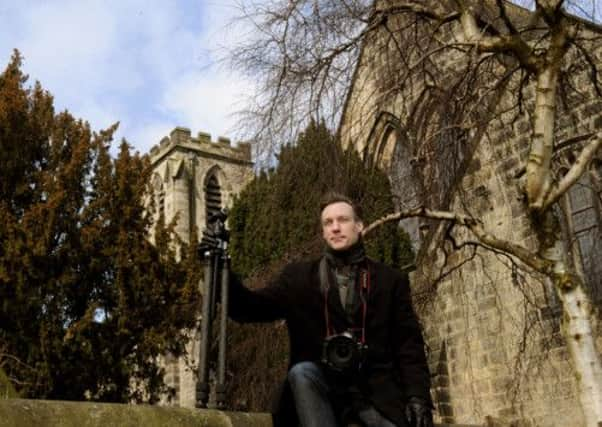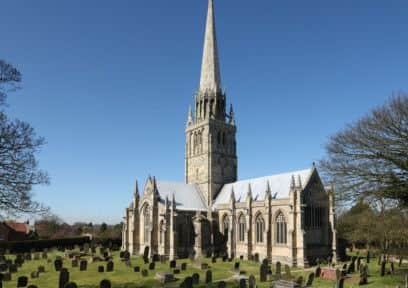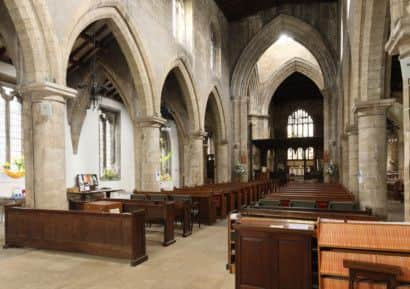The road to the aisles


Over the past 15 years, Cameron Newham has visited 7,800 English churches and taken almost 400,000 photographs of them. I say I can’t believe it. “You’re not alone,” he says. “I can’t believe it either.”
He has covered 753 Yorkshire churches (he’s as keen on statistics as he is on buildings) and he points out: “There are a lot more in Yorkshire than that. I haven’t done Leeds and Bradford yet.”
Advertisement
Hide AdAdvertisement
Hide AdNor has he done Harrogate, his base for many years working as a computer programmer. From here he has travelled the length and breadth of England for an amazingly ambitious project: to photograph the art and architecture of every pre-1900 rural parish church and archive the pictures online in his Digital Atlas of England.


All told, he reckons there are 10,000 of these churches; another six or seven years should see the job done. So far, 50,000 images are online, with a search facility that lets you access favourite features. “Font-covers” is particularly fruitful.
To gauge the project’s scope, we key-in Yorkshire, go to the East Riding, and find more than 200 churches, alphabetically catalogued from Acklam, Aldbrough and Allerthorpe to Wold Newton, Woodmansey and Yedingham. Exteriors, interiors, windows, pulpits, brasses, curious corners: they’re all here and they include some startling images of tombs which Newham has just published as a book and which we’ll look at later.
Why is he doing this? “There has to be an element of eccentricity and fanaticism,” he says. And an element of obsession? “I’d be the first to admit there has to be. And I’m an atheist, not a religious person, not spiritual in any way.”
Advertisement
Hide AdAdvertisement
Hide AdAn Australian by birth, Newham brings an outsider’s perspective to buildings many British people take for granted. The churches he knew back home in Melbourne and Perth were mostly Victorian – “incredibly new and modern” in European terms.


Long before he moved to Britain in 1996, however, he got a taste for more historic buildings during a visit to the Cotswolds. An aunt’s friend showed him copies of The Buildings of England, Nikolaus Pevsner’s exhaustive inventory of the country’s architecture. The memory of those densely factual books stayed with him.
“My interest was dormant until I came to London to live and ran across some Pevsners. There were only about 100 pictures in each book, so you wondered what the buildings he described look like.” He put speculation into action by buying a digital camera and launching his project.
“My idea was to take a picture of every secular building in the books, and three pictures of each church – an exterior, an interior and something special like a big monument inside. I discovered that one of the best times to take them was the height of summer on a Sunday morning at 5.30 or 6am. The sun is high enough and you get streetscapes with nobody there and no parked cars.”
Advertisement
Hide AdAdvertisement
Hide AdHe subsequently scaled down the project by concentrating on churches, devising “field trips” (nearly 1,500 of them) for weekends and holidays, driving to sometimes far-away counties armed with camera, Pevsners and Ordnance Survey maps.
“Most counties take about two lots of holidays to complete; I did a month’s shooting in Northumberland,” he says. “The most churches I’ve ever done in a day is 14; I now average seven or eight.” And the most pictures he’s ever taken on a single trip? 645.
He aims to take both record shots and “aesthetically pleasing pictures”, using a combination of natural light and flash. “A nice sunny day is good for exteriors but hopeless for interiors; the light comes blazing through the windows and you don’t want stained-glass colours over things. A dull day is bad for exteriors, but good for interiors.”
Church wardens have differing reactions to the project. “Some people say: ‘I can’t understand why you want to take pictures of this old building. Why are you interested in this old stuff?’ The major suspicion is that you’re taking the photographs to produce postcards, which I find rather odd, because the only place you could sell the postcards would be at the church itself, and it can take decades for a batch to be sold.
Advertisement
Hide AdAdvertisement
Hide Ad“Some people can be a bit stand-offish when you cold-call them to check their church will be open, but once they realise you’re interested in their building, they’ll go out of their way to show you things. One of the tricks of the trade is to be able to talk to people and take pictures at the same time.”
He finds about 60 per cent of churches open, and gets very animated about the others, kept locked by their parishes. “They are custodians of the building, not owners, and if they lock people out, they’re not fulfilling that function. There was a survey done in Norfolk asking people why they visited churches. The majority said it was because they wanted to come to a quiet place to sit and reflect; somewhere away from the modern world, an oasis to get away from things.”
There’s huge debate about the wisdom of not locking churches. Does it encourage thieves or deter them? “Sometimes the churches that are locked are the ones with nothing of interest in them,” Newham says. “And more and more have realised that, with their declining congregations, churches have to become multi-use buildings for the community.”
For all the forensic dedication of the project, he still gets a thrill from pushing open the doors of unfamiliar churches, often with little clue of what he’ll find inside. “Higgledy-piggledy churches are the sort I really like. It’s the places with wobbly floors and pews that don’t match: some medieval, some 17th-century, some Victorian. You can feel the continuity of history. ”
Advertisement
Hide AdAdvertisement
Hide AdHe says people often think he’ll be in and out in five minutes.“But sometimes I open a church door and there are three or four effigy tombs, and you think: ‘Oh no; this is going to take me two or three hours’.”
These effigy tombs are the subject of his new book, logically called Book of Effigies. It collects photographs of more than 80 of them, the sort with sculptures of recumbent figures on top, like people lying in state or sleeping on beds, palms pressed together for eternity.
Normally we only see these tombs from ground level, horizontal and close-up. Newham, however, has devised a way of photographing them from above, as if his camera is suspended from the church roof. It gives the now-vertical figures huge presence and personality; they look like individuals, not icons, with their tomb edges framing them, as though they’re standing in doorways.
A 14th-century knight at West Tanfield in the North Riding has his legs crossed, as if he’s dancing a ghostly jig. At Bedale, Lady Muriel Fitzalan’s skirt swirls like seashore tides. And at Ryther, Sir Robert Ryther and his wife seem to be sleeping like untroubled children. There are no fewer than six pictures of Harewood church, now in the care of the Churches Conservation Trust and arguably Yorkshire’s greatest sculpture gallery of medieval tombs.
Advertisement
Hide AdAdvertisement
Hide Ad“People ask me what my favourite church is, and that’s impossible to say,” says Newham. “You’re comparing buildings like great cathedrals with tiny places in the middle of nowhere. It’s like comparing oranges and apples.”
Or indeed oranges and lemons, as the bells of St Clement’s said.
To view the Digital Atlas of England go to www.digiatlas.org. The Book of Effigies by CB Newham is published by DAE Publishing, priced £26.95. For more details go to www.cbnewham.com.